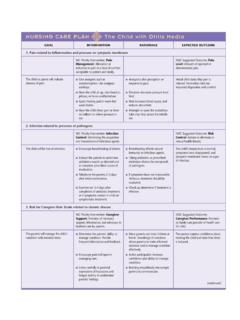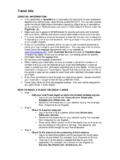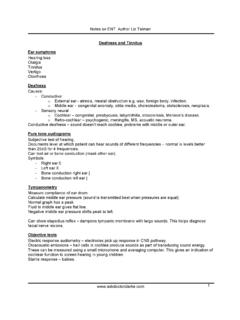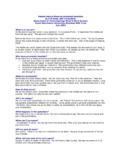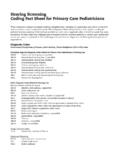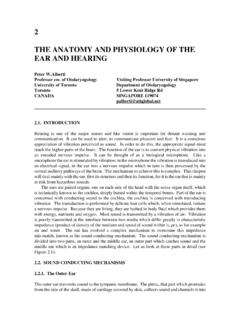Transcription of Airway Anatomy - C.L.E.M.C
1 Airway AnatomyPresented By: Steven Jones, NREMT-PAirway AnatomyUpper Airway AnatomyLower Airway AnatomyLung Capacities/VolumesPediatric Airway DifferencesAnatomy of the Upper AirwayUpper Airway AnatomyFunctionswarm, filter, and humidify airNasal cavity and nasopharynxFormed by union of facial bonesNasal floor towards ear not eyeLined with mucous membranes, ciliaTissues are delicate, vascularAdenoidsLymph tissue - filters bacteriaCommonly infectedUpper Airway AnatomyOral cavity and oropharynxTeethTongueAttached at mandible, hyoid boneMost common Airway obstruction causePalateRoof of mouthSeparates oropharynx and nasopharynxAnterior= hard palatePosterior= soft palateUpper Airway AnatomyOral cavity and oropharynxTonsilsLymph tissueFilters bacteriaCommonly infectedEpiglottisLeaf-like structureCloses during swallowingPrevents aspirationVallecula Pocket formed by base of tongue, epiglottisUpper Airway AnatomyUpper Airway AnatomySinusescavities formed by cranial bonesact as tributaries for fluid to, from eustachiantubes, tear ductstrap bacteria.
2 Commonly infectedUpper Airway AnatomyLarynxAttached to hyoid boneHorseshoe shaped boneSupports tracheaThyroid cartilageLargest laryngeal cartilageShield-shapedCartilage anteriorly, smooth muscle posteriorly Adam s Apple Glottic opening directly behindUpper Airway AnatomyLarynxGlottic openingAdult Airway s narrowest pointDependent on muscle toneContains vocal bandsArytenoidcartilagePosterior attachment of vocal bandsUpper Airway AnatomyLarynxCricoid ringFirst tracheal ringCompletely cartilaginousCompression (Sellickmaneuver) occludes esophagusCricothyroidmembraneMembrane between cricoid, thyroid cartilagesSite for surgical, needle Airway placementUpper Airway AnatomyLarynx and TracheaAssociated StructuresThyroid glandbelow cricoid cartilagelies across trachea, up both sidesCarotid arteriesbranch across, lie closely alongside tracheaJugular veinsbranch across and lie close to tracheaUpper Airway AnatomyUpper Airway AnatomyPediatric vsAdult Upper AirwayLarger tongue in comparison to size of mouthFloppy epiglottisDelicate teeth.
3 GumsMore superior larynxFunnel shaped larynx due to undeveloped cricoid cartilageNarrowest point at cricoid ring before ~8 years oldUpper Airway AnatomyUpper Airway AnatomyGlottic OpeningLower Airway AnatomyFunctionExchange O2, CO2 with bloodLocationFrom glottic opening to alveolar-capillary membraneLower Airway AnatomyTracheaBifurcates (divides) at carinaRight main stem bronchiShorterStraighterLeft main stem bronchiLined with mucous cells, beta-2 receptorsLower Airway AnatomyBronchiBranch into secondary, tertiary bronchi that branch into bronchiolesBronchiolesNo cartilage in wallsSmall smooth muscle tubesBranch into alveolar ducts that end at alveolar sacsLower Airway AnatomyAlveoli Balloon-like clustersSinedwith surfactantDecreases surface tension eases expansion surfactant atelectasis (focal collapse of alveoli)
4 Alveolar membraneActual site of gas exchangegases are exchanged between the alveolar air and the blood in the pulmonary capillaries by crossing this membraneLower Airway AnatomyLower Airway AnatomyLungsRight lung = 3 lobes; Left lung = 2 lobesPleuraVisceral membrane that covers the lungsParietal lines the inner wall of the pleural cavityHighly sensitive to painPleural spaceLower Airway Anatomy




